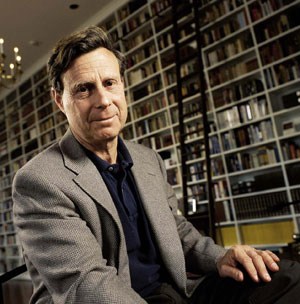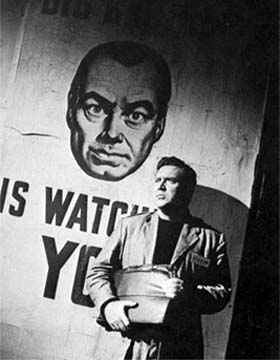I urge you to read the entire article. A couple of choice excerpts:
No living authors influence his writing, Helprin says. Instead, his lodestars include Dante, Shakespeare, Melville, Mark Twain. There are indeed echoes of Twain in his new novel, Freddy and Fredericka, due out this summer. It narrates the journey of a wayward British royal couple rusticated to America, where they travel incognito and survive hilarious adventures that read, as the dust jacket has it, “as if de Tocqueville had been rewritten by Mark Twain (with a deep bow to Harpo Marx).”
Helprin is a classicist. He believes in history, tradition, and eternal verities. He values aesthetic symmetries and the literary forms the centuries have passed down to us. To Helprin, the principles of modernism are fatal to art, and he has no truck with the avant-garde. “The avant-garde are frauds,” he bluntly declares. “Modern literature is all cool and detached, even though a lot of modern writers are passionate about their politics. To me, passion should be for literature, and reason and detachment for politics.
***
Consider the following collection of snapshots from Helprin’s unwritten memoirs. His godfather was the celebrated photographer Robert Capa; Helprin served briefly in the British Merchant Navy and the Israeli army and air force; he can voluntarily raise or lower his pulse, he says, by 20 beats per minute; he met Malcolm X twice, and Martin Luther King Jr. once—the latter at Christmastime, alongside an enormous bowl of shrimp (“We talked about shrimp,” Helprin says). In Copenhagen, a violent, screaming Judy Garland occupied the adjoining hotel room; in Montreux, his balcony was next to that of a gentlemanly Vladimir Nabokov. In 1987, Helprin was in Los Angeles to sign a motion-picture deal for Winter’s Tale with Columbia Pictures president David Puttnam. He let Jane Fonda go in before him and lost the deal because Puttnam was fired just as Fonda left the office. (Helprin has small esteem for the Hollywood business model, which he calls “equal parts wild animal, tyrant, agitated psychotic, and the kind of snake that is rumored to enter the house through the toilet.”) He saw the Queen Mother process down a seedy back street in Ossining; in 1973 he warned, through channels, of the impending war against Israel, but Moshe Dayan wasn’t listening to an enlisted man. He disarmed a huge, drunken, knife-wielding lout on the New York City subway. His languages include Latin, French, Italian, Hebrew, Arabic, and German. Helprin’s hero is Winston Churchill, and in 2001, when he and family traveled to London, within 15 minutes of arriving in South Kensington they found themselves waiting to cross a street alongside Winston S. Churchill III, the hero’s grandson and namesake. Helprin used to do dangerous things, like mountain climbing, parachute jumping, and running along the tops of moving freight trains. He once ran a double marathon of more than 50 miles. In addition, “He attracts madmen,” says his wife, Lisa. “If we were separated while shopping and there was a commotion somewhere in the store, it always involved Mark. Horses will rear up when they see him.”
(via Arts & Letters Daily)





















